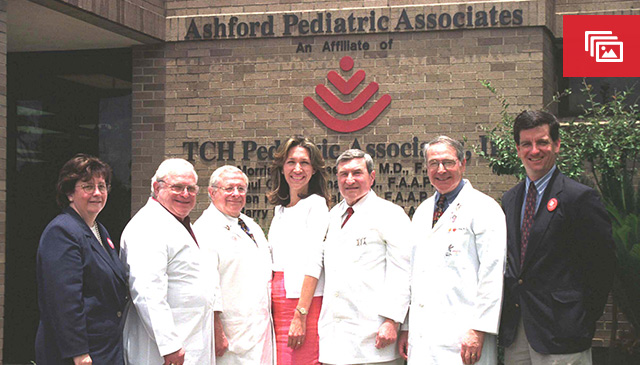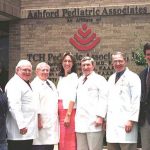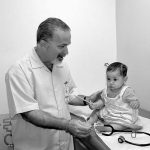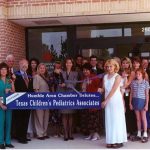
Twenty-five years ago, Texas Children’s launched what is now the largest pediatric network in the nation with more than 250 board-certified pediatricians and more than 60 practices throughout the greater Houston area, College Station and in Austin. The group cares for over 400,000 patients and completes more than a million visits each year.
The physician network was formed in 1995 under the guidance of Dr. Ralph Feigin with the acquisition of the Ashford practice in west Houston owned and operated by four brothers – Drs. Paul, Morris, Ben and Harry Rosenthal. Because of its success, more and more pediatricians joined the group, making it what it is today.
In addition to its ever-growing primary care network, Texas Children’s Pediatrics operates 11 urgent care centers in the greater Houston area and one in Austin. The group also includes the Community Cares Program that provides trusted, high-quality pediatric medical services at designated locations to children who otherwise would seek care from emergency rooms or possibly go without care or treatment due to low family incomes and/or lack of health insurance.
Texas Children’s Pediatrics has consistently adapted to the needs of patients and their families while continuing to provide high-quality care. In celebration of the group’s 25 years of service, Texas Children’s Pediatrics President Kay Tittle answered a few questions about the group’s beginnings, present challenges amid the pandemic and future success.
Why, 25 years ago, did Texas Children’s start offering primary care services to patients and families across the greater Houston area and beyond?
Texas Children’s Pediatrics was part of Texas Children’s President and CEO Mark Wallace’s vision of what Texas Children’s needed to thrive in the changing environment in the 1990s. Many community pediatricians had reached out to Texas Children’s to ask for help as they were struggling to manage the increased complexities of running a practice. Managed care in particular was a large challenge for the practices as they worked to understand the changes in insurance coverage.
How did the group grow and become such a success?
Our focus has always been to provide the support needed to help physicians, advanced practice providers and staff provide the highest quality of care possible. We do this by providing physicians with administrative, financial and management expertise. Our reputation for providing such support helped us grow 25 years ago and continues to help us flourish today.
What are some of the things Texas Children’s Pediatrics has had to do over the years to maintain quality of care while also meeting the ever-growing and changing demands of patients and families?
In 2011, we made the decision to pursue National Committee for Quality Assurance (NCQA) recognition as a patient-centered medical home. This program focuses on how practices use data to improve the care they provide. The program provided the structure to help us maintain our focus on quality care and patient needs. We have been recognized every three years since as a Level III patient-centered medical home by NCQA, which is the highest recognition the organization gives out.
How has the COVID-19 pandemic changed the way Texas Children’s Pediatrics and Texas Children’s Urgent Care delivers care?
The pandemic has changed many things in our organization. Our focus has been to provide safe care and a safe environment for our patients as well as our staff while meeting the changing needs of our patients and families. We have received a positive response to changes such as Precheck-in using MyChart, waiting in one’s vehicle instead of our waiting rooms, being taken to an exam room as quickly as possible after arriving, scheduling well visits in the morning and sick visits in the afternoon, and car side immunizations. We were also able to quickly incorporate a telemedicine program with support from across the system. More than 20 percent of our encounters are now completed via telemedicine, which has helped meet the needs of patients and families in so many ways. The comments on our Press Ganey surveys are good reminders of the challenges our families are facing, and what we as an organization need to focus on to help them receive the right care, at the right time and at the right place.
What are some of the things the group will need to do in the future to remain successful?
We will need to continue to adapt to the needs of our patients and families as well as to the health care industry as a whole. We want to continue to lead the change and innovation necessary to grow and provide the highest quality of care no matter the circumstances.
In looking back and ahead, what are some of your most memorable moments as president?
Our team has created many great memories over the past 25 years. I think the move to an electronic medical record was notable and most exciting when paper charts were no longer needed. It has also been great fun to grow in Austin and College Station over the past few years. They are both exciting areas. As we look ahead, I look forward to making more great memories with the team.










